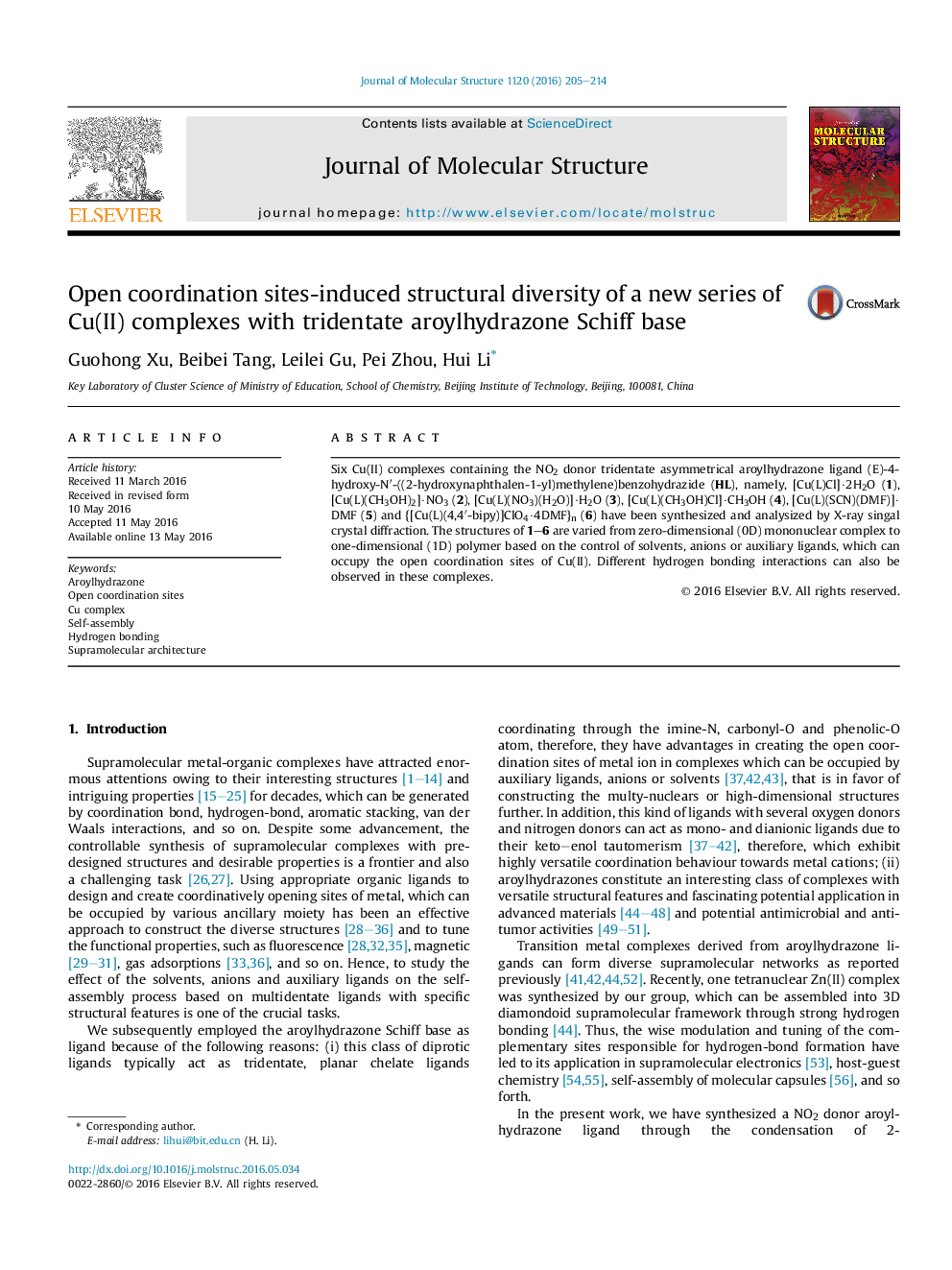| کد مقاله | کد نشریه | سال انتشار | مقاله انگلیسی | نسخه تمام متن |
|---|---|---|---|---|
| 1401136 | 1501697 | 2016 | 10 صفحه PDF | دانلود رایگان |

• Six Cu(II) complexes containing aroylhydrazone were synthesized and analysized by X-ray singal crystal diffraction.
• By controlling the conditions, an effective way to create the open coordination sites in coordination complexes was offered.
• Hydrogen bonds exist in all six complexes to construct supramolecular architecture.
Six Cu(II) complexes containing the NO2 donor tridentate asymmetrical aroylhydrazone ligand (E)-4-hydroxy-N′-((2-hydroxynaphthalen-1-yl)methylene)benzohydrazide (HL), namely, [Cu(L)Cl]·2H2O (1), [Cu(L)(CH3OH)2]·NO3 (2), [Cu(L)(NO3)(H2O)]·H2O (3), [Cu(L)(CH3OH)Cl]·CH3OH (4), [Cu(L)(SCN)(DMF)]·DMF (5) and {[Cu(L)(4,4′-bipy)]ClO4·4DMF}n (6) have been synthesized and analysized by X-ray singal crystal diffraction. The structures of 1–6 are varied from zero-dimensional (0D) mononuclear complex to one-dimensional (1D) polymer based on the control of solvents, anions or auxiliary ligands, which can occupy the open coordination sites of Cu(II). Different hydrogen bonding interactions can also be observed in these complexes.
Figure optionsDownload as PowerPoint slide
Journal: Journal of Molecular Structure - Volume 1120, 15 September 2016, Pages 205–214